有机化学 ›› 2024, Vol. 44 ›› Issue (12): 3647-3677.DOI: 10.6023/cjoc202405046 上一篇 下一篇
综述与进展
孙婷珈a,b, 孙国银a,b, 孙威a,b, 彭雪松a,b, 廖娟a,b, 游勇a,*( ), 袁伟成a,b,*(
), 袁伟成a,b,*( )
)
收稿日期:2024-05-30
修回日期:2024-09-01
发布日期:2024-09-10
基金资助:
Tingjia Suna,b, Guoyin Suna,b, Wei Suna,b, Xuesong Penga,b, Juan Liaoa,b, Yong Youa,*( ), Weicheng Yuana,b,*(
), Weicheng Yuana,b,*( )
)
Received:2024-05-30
Revised:2024-09-01
Published:2024-09-10
Contact:
*E-mail:Supported by:文章分享
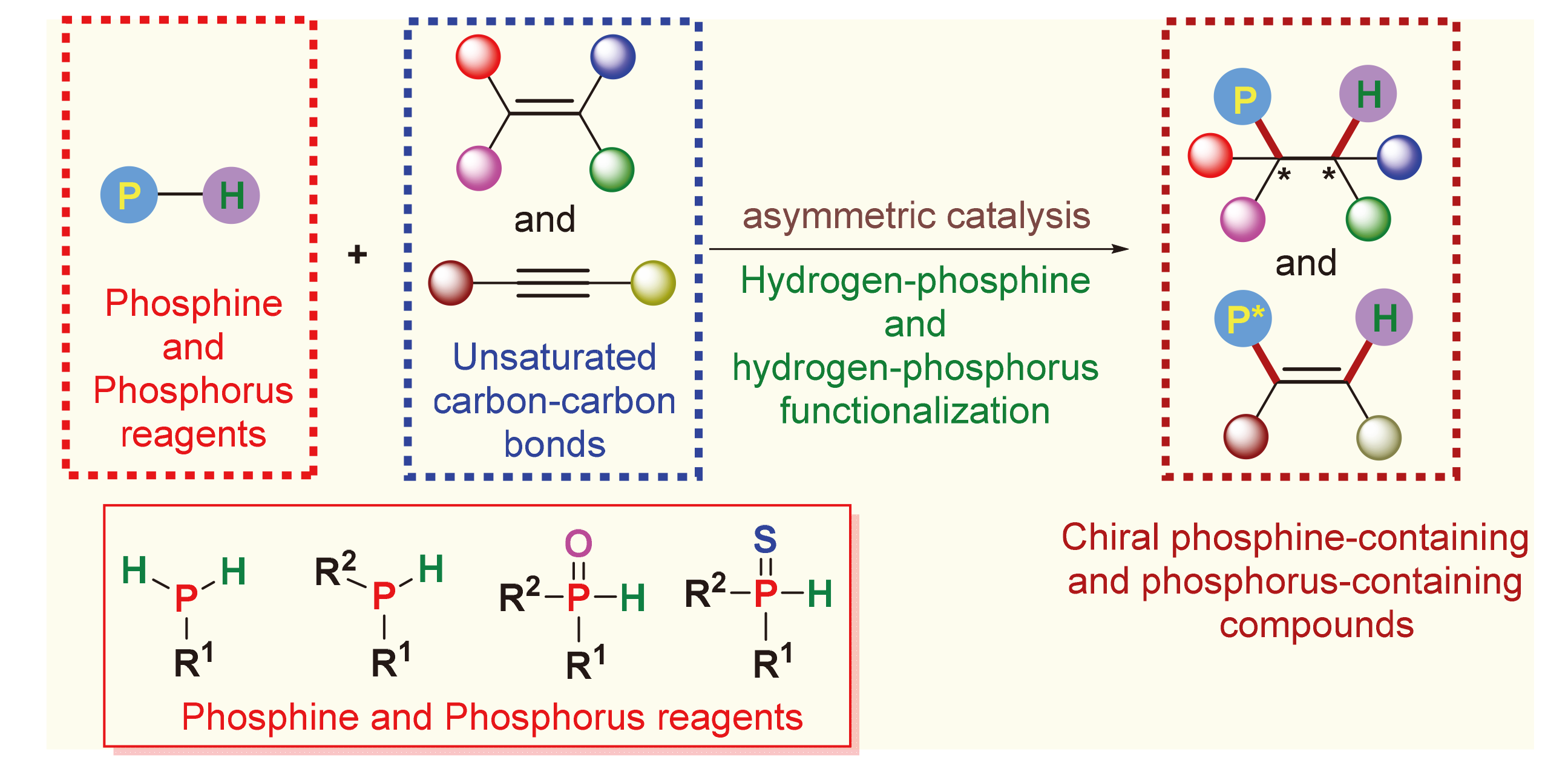
手性含膦(磷)化合物广泛应用于医药、农业、材料以及不对称催化合成等领域, 因此, 发展高效方法用于合成结构多样的手性含膦(磷)化合物引起许多化学工作者的关注. 在已发展的众多合成策略中, 碳-碳不饱和键的催化不对称氢-膦(磷)官能化反应是一类高效且原子经济的方法. 利用该方法可以高效地合成多种类型的手性含膦(磷)化合物, 包括含有碳手性、轴手性、磷手性以及同时含有碳手性和磷手性中心的含膦(磷)化合物. 主要介绍了近十年碳-碳不饱和键的催化不对称氢-膦(磷)官能化反应的研究进展, 从反应机理、合成应用、存在的挑战以及未来的发展等方面进行了阐释与讨论.
孙婷珈, 孙国银, 孙威, 彭雪松, 廖娟, 游勇, 袁伟成. 碳-碳不饱和键的催化不对称氢-膦(磷)官能化反应研究进展[J]. 有机化学, 2024, 44(12): 3647-3677.
Tingjia Sun, Guoyin Sun, Wei Sun, Xuesong Peng, Juan Liao, Yong You, Weicheng Yuan. Advances in Catalytic Asymmetric Hydrogen-Phosphine/Phosphorus Functionalization of Unsaturated Carbon-Carbon Bonds[J]. Chinese Journal of Organic Chemistry, 2024, 44(12): 3647-3677.











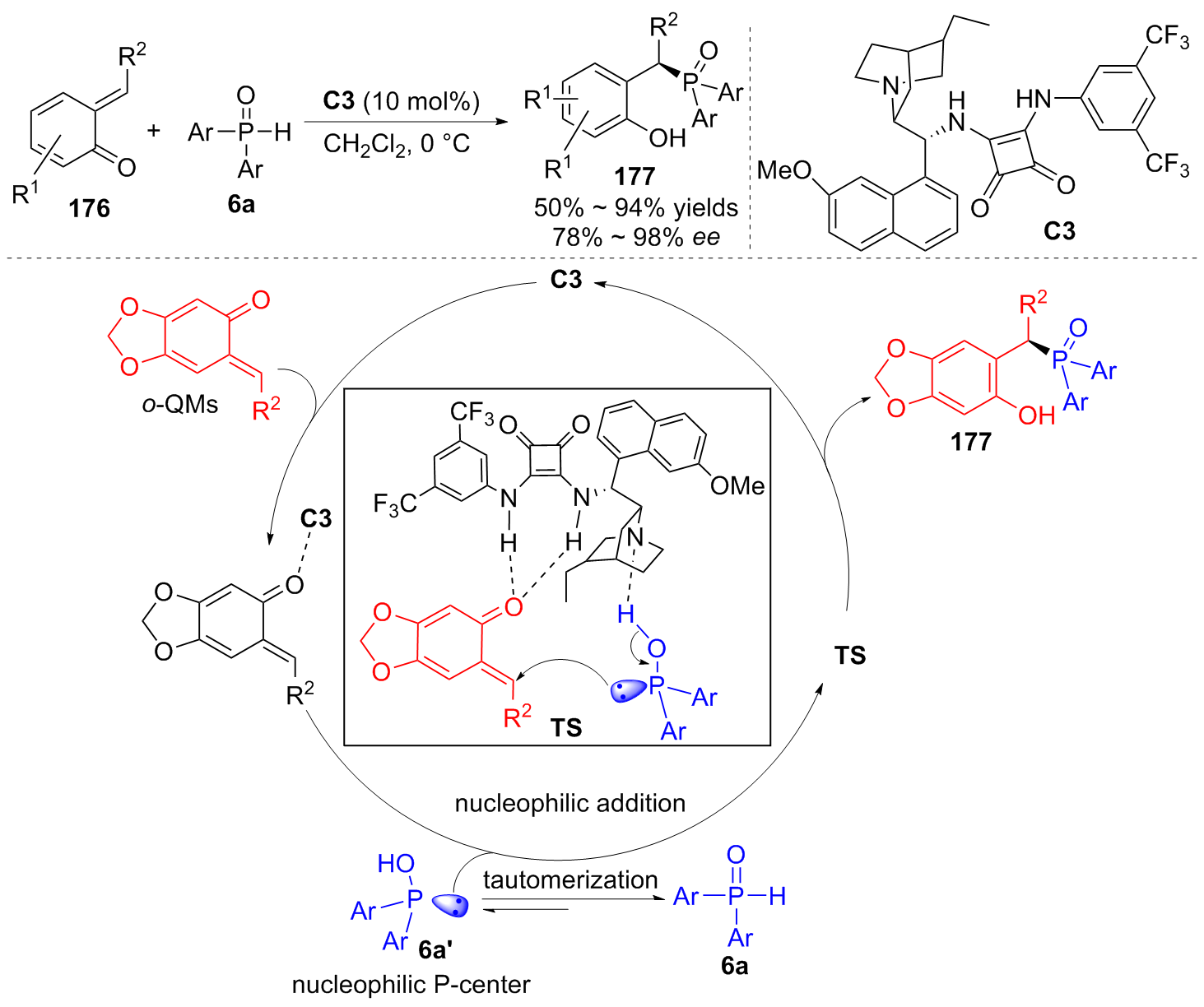
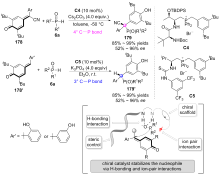

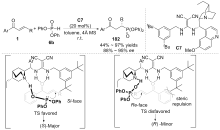

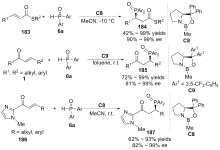

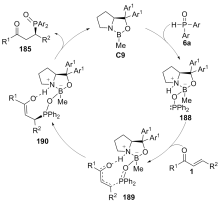


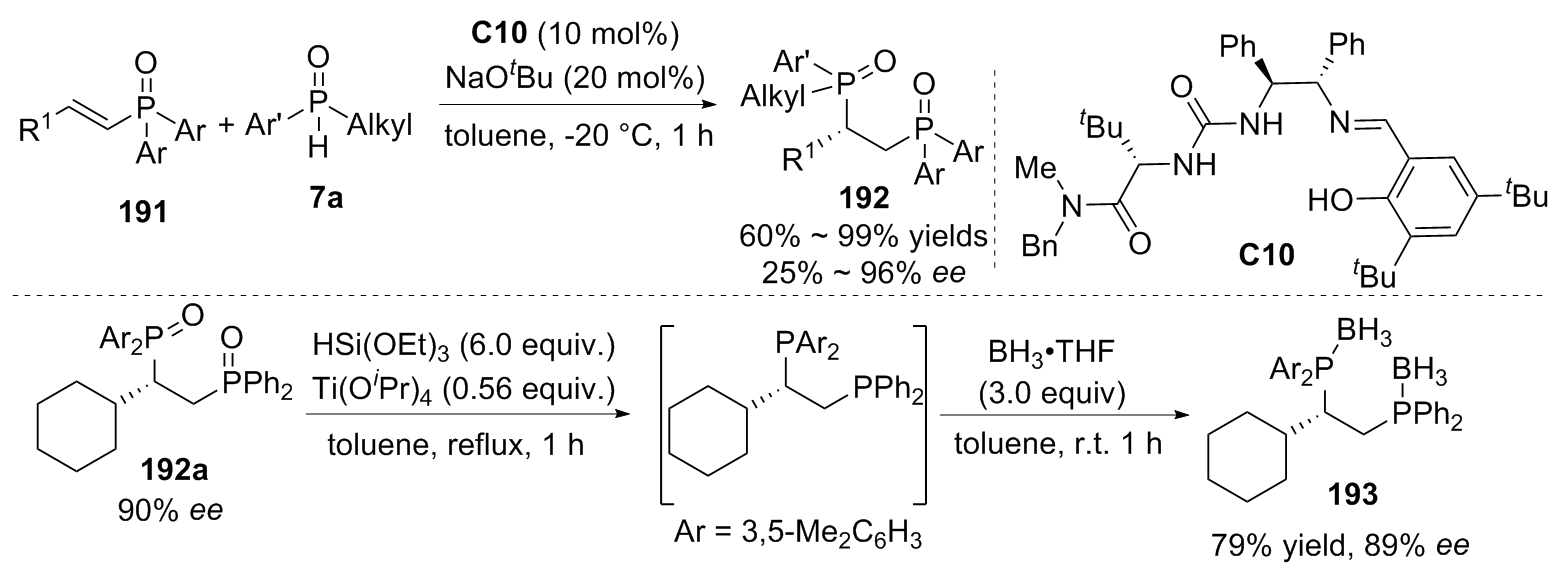
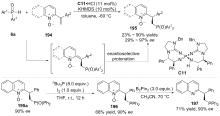



| [1] |
(a) Hecker S.-J.; Erion M.-D. J. Med. Chem. 2008, 51, 2328.
doi: 10.1021/jm701260b pmid: 2066973 |
|
(b) Sheng X.-C.; Pyun H.-J.; Chaudhary K.; Wang J.; Doerffler E.; Fleury M.; Kim C.-U. Bioorg. Med. Chem. Lett. 2009, 19, 3453.
pmid: 2066973 |
|
|
(c) Zhang Y.-P.; You Y.; Yin J.-Q.; Wang Z.-H.; Zhao J.-Q.; Li Q.; Yuan W.-C. Eur. J. Org. Chem. 2023, 26, e202300728.
pmid: 2066973 |
|
|
(d) Wiemer A.-J. ACS Pharmacol. Transl. Sci. 2020, 3, 613.
pmid: 2066973 |
|
|
(e) Jia X.; Schols D.; Meier C. J. Med. Chem. 2020, 63, 6003.
pmid: 2066973 |
|
|
(f) Atherton F. R.; Hassall C. H.; Lambert R. W. J. Med. Chem. 1986, 29, 29.
pmid: 2066973 |
|
|
(g) Lavielle G.; Hautefaye P.; Schaeffer C.; Boutin J. A.; Cudennec C. A.; Pierre A. J. Med. Chem. 1991, 34, 1998.
pmid: 2066973 |
|
| [2] |
(a) Xu G.-Q.; Senanayake C.-H.; Tang W.-J. Acc. Chem. Res. 2019, 52, 1101.
|
|
(b) Li W.-B.; Zhang J.-L. Chem. Soc. Rev. 2016, 45, 1657.
|
|
| [3] |
(a) Yao Q.-L.; Wang A.-J.; Pu J.-Z.; Tang Y.-M. Chin. J. Org. Chem. 2014, 34, 292 (in Chinese).
|
|
(姚秋丽, 王安俊, 蒲家志, 唐瑜敏, 有机化学, 2014, 34, 292.)
doi: 10.6023/cjoc201309008 |
|
|
(b) Li Z.; Duan W.-L. Chin. J. Org. Chem. 2016, 36, 1805 (in Chinese).
|
|
|
(李振, 段伟良, 有机化学, 2016, 36, 1805.)
doi: 10.6023/cjoc201602018 |
|
|
((c) Zhu R.-Y.; Liao K.; Yu J.-S.; Zhou J. Acta Chim. Sinica 2020, 78, 193 (in Chinese).
|
|
|
(朱仁义, 廖奎, 余金生, 周剑, 化学学报, 2020, 78, 193.)
doi: 10.6023/A20010002 |
|
|
(d) Li H.; Yin L. Chin. J. Org. Chem. 2022, 42, 3183 (in Chinese).
|
|
|
(李晖, 殷亮, 有机化学, 2022, 42, 3183.)
doi: 10.6023/cjoc202208002 |
|
|
(e) Luo C.; Yin Y.-L.; Jiang Z.-Y. Chin. J. Org. Chem. 2023, 43, 1963 (in Chinese).
|
|
|
(罗诚, 尹艳丽, 江智勇, 有机化学, 2023, 43, 1963.)
doi: 10.6023/cjoc202212024 |
|
|
(f) Ding K.; Su B. Eur. J. Org. Chem. 2024, 27, e202301160.
|
|
| [4] |
(a) Feng J.-J.; Chen X.-F.; Shi M.; Duan W.-L. J. Am. Chem. Soc. 2010, 132, 5562.
|
|
(b) Huang Y.-H.; Pullarkat S. A.; Li Y.-X.; Leung P.-H. Chem. Commun. 2010, 46, 6950.
|
|
| [5] |
Wang C.-Y.; Huang K.-S.; Ye J.; Duan W.-L. J. Am. Chem. Soc. 2021, 143, 5685.
|
| [6] |
Hao X.-Q.; Zhao Y.-W.; Yang J.-J.; Niu J.-L.; Gong J.-F. Song M.-P. Organometallics 2014, 33, 1801.
|
| [7] |
Li C.; Bian Q.-L.; Xu S.; Duan W.-L. Org. Chem. Front. 2014, 1, 541.
|
| [8] |
Song Y.-C.; Dai G.-F.; Xiao F.-H.; Duan W.-L. Tetrahedron Lett. 2016, 57, 2990.
|
| [9] |
Chen Y.-R.; Feng J.-J.; Duan W.-L. Tetrahedron Lett. 2014, 55, 595.
|
| [10] |
Chew R. J.; Lu Y.-P.; Jia Y.-X.; Li B.-B.; Wong E. H. Y.; Goh R.; Li Y.-X.; Huang Y.-H.; Pullarkat S. A.; Leung P.-H. Chem.- Eur. J. 2014, 20, 14514.
|
| [11] |
Chew R. J.; Sepp K.; Li B.-B.; Li Y.-X.; Zhu P.-C.; Tan N. S.; Leung P.-H. Adv. Synth. Catal. 2015, 357, 3297.
|
| [12] |
Chew R. J.; Teo K. Y.; Huang Y.-H.; Li B.-B.; Li Y.-X.; Pullarkat S. A.; Leung P.-H. Chem. Commun. 2014, 50, 8768.
|
| [13] |
Xu Y.; Yang Z.-H.; Ding B.-Q.; Liu D.-L.; Liu Y.-G.; Sugiya M.; Imamoto T.; Zhang W.-B. Tetrahedron 2015, 71, 6832.
|
| [14] |
Yue W.-J.; Xiao J.-Z.; Zhang S.; Yin L. Angew. Chem., Int. Ed. 2020, 59, 7057.
|
| [15] |
Li Y.-B.; Tian H.; Yin L. J. Am. Chem. Soc. 2020, 142, 20098.
|
| [16] |
Pérez J. M.; Postolache R.; Reis M. C.; Sinnema E. G.; Vargová D.; Vries F.; Otten E.; Ge L.; Harutyunyan S. R. J. Am. Chem. Soc. 2021, 143, 20071.
|
| [17] |
Ge L.; Harutyunyan S. R. Chem. Sci. 2022, 13, 1307.
|
| [18] |
Postolache R.; Pérez J. M.; Reis M. C.; Ge L.; Sinnema E. G.; Harutyunyan S. R. Org. Lett. 2023, 25, 1611.
doi: 10.1021/acs.orglett.2c04256 pmid: 36892214 |
| [19] |
Wang C.-Y.; Yin P.; Dai Y.-H.; Ye J.; Duan W.-L. J. Organomet. Chem. 2023, 983, 122552.
|
| [20] |
Ji D.-Q.; Qi Z.-S.; Li X.-W. Org. Lett. 2023, 25, 5957.
|
| [21] |
Yang Q.-J.; Zhou J.; Wang J. Chem. Sci. 2023, 14, 4413.
|
| [22] |
Sinnema E. G.; Ramspoth T.-F.; Bouma R. H.; Ge L.; Harutyunyan S. R. Angew. Chem., Int. Ed. 2024, 63, e202316785.
|
| [23] |
Lu J.-Z.; Ye J.-X.; Duan W.-L. Chem. Commun. 2014, 50, 698.
|
| [24] |
Huang J.; Zhao M.-X.; Duan W.-L. Tetrahedron Lett. 2014, 55, 629.
|
| [25] |
Huang Y.-H.; Li Y.-X.; Leung P.-H.; Hayashi T. J. Am. Chem. Soc. 2014, 136, 4865.
|
| [26] |
Sadeer A.; Ong Y. J.; Kojima T.; Foo C. Q.; Li Y.-X.; Pullarkat S.-A.; Leung P.-H. Chem.-Asian J. 2018, 13, 2829.
|
| [27] |
Lu Z.-W.; Zhang H.-Y.; Yang Z.-P.; Ding N.; Meng L.; Wang J. ACS Catal. 2019, 9, 1457.
|
| [28] |
Zhang Y.-L.; Jiang Y.-X.; Li M.-L.; Huang Z.-X.; Wang J. Chem. Catal. 2022, 2, 3163.
|
| [29] |
Lin X.-B.; An K.; Zhuo Q.-D.; Nishiura M.-Y.; Cong X.-F.; Hou Z.-M. Angew. Chem., Int. Ed. 2023, 62, e202308488.
|
| [30] |
Zhang S.; Jiang N.; Xiao J.-Z.; Lin G.-Q.; Yin L. Angew. Chem., Int. Ed. 2023, 62, e202218798.
|
| [31] |
Zhang Y.-D.; Zhu S.-F. Acta Chim. Sinica 2023, 81, 777 (in Chinese).
|
|
(张艳东, 朱守非, 化学学报, 2023, 81, 777.)
doi: 10.6023/A23040125 |
|
| [32] |
Ji D.-Q.; Jing J.-R.; Wang Y.; Qi Z.-S.; Wang F.; Zhang X.-P.; Wang Y.; Li X.-W. Chem 2022, 8, 3346.
|
| [33] |
Wu Z.-H.; Cheng A.-Q.; Yuan M.; Zhao Y.-X.; Yang H.-L.; Wei L.-H.; Wang H.-Y.; Wang T.; Zhang Z.-T.; Duan W.-L. Angew. Chem., Int. Ed. 2021, 60, 27241.
|
| [34] |
Yu X.-H.; Lu L.-Q.; Zhang Z.-H.; Shi D.-Q.; Xiao W.-J. Org. Chem. Front. 2023, 10, 133.
|
| [35] |
Nie S.-Z.; Davison R.-T.; Dong V.-M. J. Am. Chem. Soc. 2018, 140, 16450.
|
| [36] |
Long J.; Li Y.-Q.; Zhao W.-N.; Yin G.-Y. Chem. Sci. 2022, 13, 1390.
|
| [37] |
(a) Li G.-L.; Huo X.-H.; Jiang X.-Y.; Zhang W.-B. Chem. Soc. Rev. 2020, 49, 2060.
pmid: 33301308 |
|
(b) Blieck R.; Taillefer M.; Monnier F. Chem. Rev. 2020, 120, 13545.
doi: 10.1021/acs.chemrev.0c00803 pmid: 33301308 |
|
| [38] |
Yang Z.-P.; Wang J. Angew. Chem., Int. Ed. 2021, 60, 27288.
|
| [39] |
Zhou J.; Meng L.; Lin S.-J.; Cai B.-H.; Wang J. Angew. Chem., Int. Ed. 2023, 62, e202303727.
|
| [40] |
Duan S.-Z.; Pan A.-L.; Du Y.; Zhu G.-L.; Tian X.; Zhang H.-B.; Walsh P. J.; Yang X.-D. ACS Catal. 2023, 13, 10887.
|
| [41] |
Dai Q.; Liu L.; Qian Y.-Y.; Li W.-B.; Zhang J.-L. Angew. Chem., Int. Ed. 2020, 59, 20645.
|
| [42] |
Xie X.-X.; Li S.-L.; Chen Q.-Y.; Guo H.; Yang J.-F.; Zhang J.-L. Org. Chem. Front. 2022, 9, 1589.
|
| [43] |
Yang Z.-P.; Gu X.-D.; Han L.-B.; Wang J. Chem. Sci. 2020, 11, 7451.
|
| [44] |
Liu X.-T.; Han X.-Y.; Wu Y.; Sun Y.-Y.; Gao L.; Huang Z.; Zhang Q.-W. J. Am. Chem. Soc. 2021, 143, 11309.
|
| [45] |
Wang W.-H.; Wu Y.; Qi P.-J.; Zhang Q.-W. ACS Catal. 2023, 13, 6994.
|
| [46] |
Zhang Y.-Q.; Han X.-Y.; Wu Y.; Qi P.-J.; Zhang Q.; Zhang Q.-W. Chem. Sci. 2022, 13, 4095.
|
| [47] |
(a) Ananikov V. P.; Makarov A. V.; Beletskaya I. P. Chem.-Eur. J. 2011, 17, 12623.
|
|
(b) Ananikov V. P.; Beletskaya I. P. Chem.-Asian J. 2011, 6, 1423.
|
|
|
(c) Khemchyan L. L.; Ivanova J. V.; Zalesskiy S. S.; Ananikov V. P.; Beletskaya I. P.; Starikova Z. A. Adv. Synth. Catal. 2014, 356, 771.
|
|
| [48] |
Cai B.-H.; Cui Y.; Zhou J.; Wang Y.-B.; Yang L.-M.; Tan B.; Wang J. Angew. Chem., Int. Ed. 2023, 62, e202215820.
|
| [49] |
Li Y.-B.; Li Y.; Yin L. Chin. Chem. Lett. 2024, 35, 109294.
|
| [50] |
Maiti R.; Yan J.-L.; Yang X.; Mondal B.; Xu J.; Chai H.-F.; Jin Z.-C.; Robin Chi Y.-G. Angew. Chem., Int. Ed. 2021, 60, 26616.
|
| [51] |
Gu X.; Yuan H.; Jiang J.; Wu Y.; Bai W.-J. Org. Lett. 2018, 20, 7229.
|
| [52] |
Chen Y.; Yu Z.-Y.; Jiang Z.-Y.; Tan J.-P.; Wu J.-H.; Lan Y.; Ren X.-Y.; Wang T.-L. ACS Catal. 2021, 11, 14168.
|
| [53] |
Jia Y.-Q.; Zhao J.-Q.; Wang Z.-H.; You Y.; Zhang Y.-P.; Jin X.; Zhou M.-Q.; Ge Z.-Z.; Yuan W.-C. Chem. Commun. 2022, 58, 12062.
|
| [54] |
Arai R.; Hirashima S.-I.; Nakano T.; Kawada M.; Akutsu H.; Nakashima K.; Miura T. J. Org. Chem. 2020, 85, 3872.
|
| [55] |
(a) Shi Y.-R.; Chen L.-R.; Gao Q.; Li J.-L.; Guo Y.-F.; Fan B.-M. Org. Lett. 2023, 25, 6495.
|
|
(b) Qian J.-Y.; Zhao H.-Y.; Gao Q.; Chen L.-R.; Shi Y.-R.; Li J.-L.; Guo Y.-F.; Fan B.-M. Org. Chem. Front. 2023, 10, 5672.
|
|
|
(c) Chen L.-R.; Wang G.-Y.; Nong X.-F.; Shao W.-D.; Li J.-L.; Guo Y.-F.; Fan B.-M. Chem.-Eur. J. 2024, e202401017.
|
|
| [56] |
Kondoh A.; Ishikawa S.; Terada M. Org. Biomol. Chem. 2020, 18, 7814.
|
| [57] |
Das S.; Hu Q.-P.; Kondoh A.; Terada M. Angew. Chem., Int. Ed. 2021, 60, 1417.
|
| [58] |
Wang B.-H.; Liu Y.-L.; Jiang C.-Y.; Cao Z.; Cao S.-S.; Zhao X.-W.; Ban X.; Yin Y.-L.; Jiang Z.-Y. Angew. Chem., Int. Ed. 2023, 62, e202216605.
|
| [59] |
Hirashima S.-I.; Hirota E.; Matsushima Y.; Noda N.; Nishimura Y.; Narushima T.; Nakashima K.; Miura T. Chem.-Asian J. 2022, 17, e202200989.
|
| [1] | 王家晟, 王泽树, 何卫民, 叶龙武. 邻炔基苯胺氢胺化合成轴手性吲哚研究进展[J]. 有机化学, 2024, 44(6): 1786-1792. |
| [2] | 刘晨光. 含氮芳香性杂环化合物的不对称氢化反应研究进展[J]. 有机化学, 2024, 44(5): 1403-1422. |
| [3] | 高淳, 刘欣, 王明慧, 刘淑贤, 朱婷婷, 张怡康, 郝二军, 杨启亮. 电化学不对称合成反应的研究进展[J]. 有机化学, 2024, 44(3): 673-727. |
| [4] | 杨爽, 房新强. 氮杂环卡宾催化实现的动力学拆分近期研究进展[J]. 有机化学, 2024, 44(2): 448-480. |
| [5] | 陈宛婷, 钟雄威, 邢佳乐, 吴昌书, 高杨. C—N轴手性化合物的不对称催化合成研究进展[J]. 有机化学, 2024, 44(2): 349-377. |
| [6] | 李晖, 殷亮. 铜催化的手性膦化合物不对称合成研究进展[J]. 有机化学, 2024, 44(12): 3575-3586. |
| [7] | 龙姣, 刘白雪, 张双双, 朱园园, 古双喜. 镍催化1,3-二烯的不对称氢官能团化反应研究进展[J]. 有机化学, 2024, 44(11): 3309-3320. |
| [8] | 姜权彬. 经由氮杂邻联烯醌中间体合成轴手性化合物的研究进展[J]. 有机化学, 2024, 44(1): 159-172. |
| [9] | 程春霞, 吴露平, 沙风, 伍新燕. 手性叔膦-酰胺不对称催化香豆素与Morita-Baylis-Hillman碳酸酯之间的插烯烯丙基烷基化反应[J]. 有机化学, 2023, 43(9): 3188-3195. |
| [10] | 罗诚, 尹艳丽, 江智勇. P-手性膦氧化物的不对称合成研究进展[J]. 有机化学, 2023, 43(6): 1963-1976. |
| [11] | 王海清, 杨爽, 张宇辰, 石枫. 邻羟基苄醇参与的催化不对称反应研究进展[J]. 有机化学, 2023, 43(3): 974-999. |
| [12] | 方思强, 刘赞娇, 王天利. Atherton-Todd反应的研究进展[J]. 有机化学, 2023, 43(3): 1069-1083. |
| [13] | 曹伟地, 刘小华. 不对称催化质子化构建α-叔碳羰基化合物研究进展[J]. 有机化学, 2023, 43(3): 961-973. |
| [14] | 赵佳怡, 葛怡聪, 何川. 不对称催化Si—H/X—H脱氢偶联构筑硅中心手性[J]. 有机化学, 2023, 43(10): 3352-3366. |
| [15] | 曾燕, 叶飞. 不对称催化构建硅立体中心化合物的新反应体系研究进展[J]. 有机化学, 2023, 43(10): 3388-3413. |
| 阅读次数 | ||||||
|
全文 |
|
|||||
|
摘要 |
|
|||||